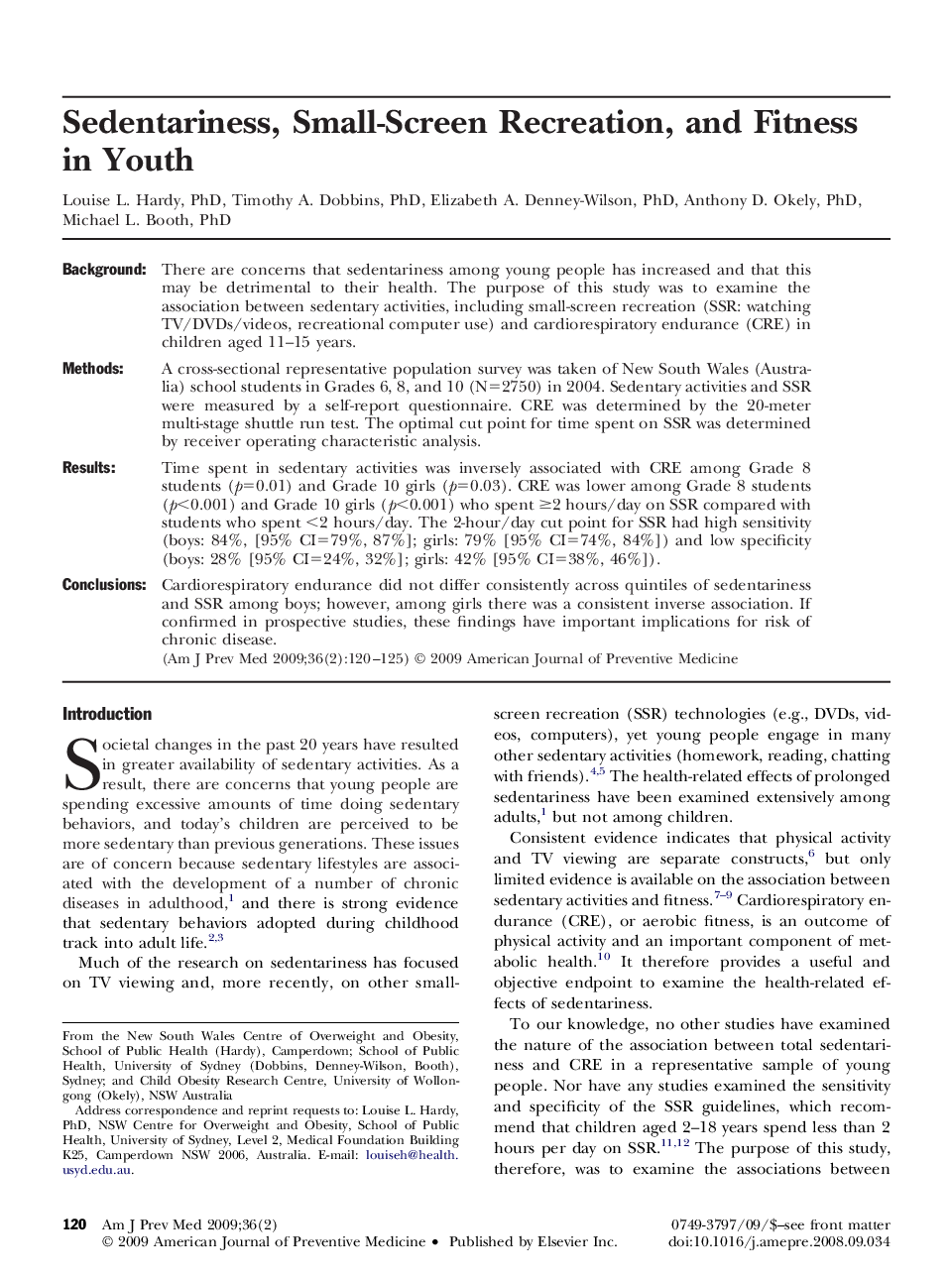| Article ID | Journal | Published Year | Pages | File Type |
|---|---|---|---|---|
| 4193425 | American Journal of Preventive Medicine | 2009 | 6 Pages |
BackgroundThere are concerns that sedentariness among young people has increased and that this may be detrimental to their health. The purpose of this study was to examine the association between sedentary activities, including small-screen recreation (SSR: watching TV/DVDs/videos, recreational computer use) and cardiorespiratory endurance (CRE) in children aged 11–15 years.MethodsA cross-sectional representative population survey was taken of New South Wales (Australia) school students in Grades 6, 8, and 10 (N=2750) in 2004. Sedentary activities and SSR were measured by a self-report questionnaire. CRE was determined by the 20-meter multi-stage shuttle run test. The optimal cut point for time spent on SSR was determined by receiver operating characteristic analysis.ResultsTime spent in sedentary activities was inversely associated with CRE among Grade 8 students (p=0.01) and Grade 10 girls (p=0.03). CRE was lower among Grade 8 students (p<0.001) and Grade 10 girls (p<0.001) who spent ≥2 hours/day on SSR compared with students who spent <2 hours/day. The 2-hour/day cut point for SSR had high sensitivity (boys: 84%, [95% CI=79%, 87%]; girls: 79% [95% CI=74%, 84%]) and low specificity (boys: 28% [95% CI=24%, 32%]; girls: 42% [95% CI=38%, 46%]).ConclusionsCardiorespiratory endurance did not differ consistently across quintiles of sedentariness and SSR among boys; however, among girls there was a consistent inverse association. If confirmed in prospective studies, these findings have important implications for risk of chronic disease.
